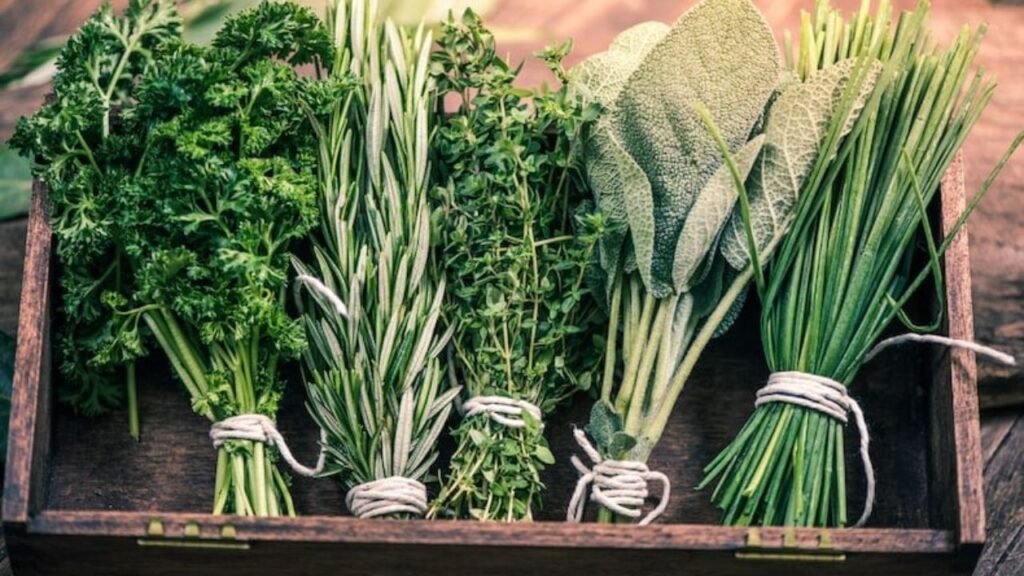In every culture and civilization, plants have played a central role in healing, nourishment, and spiritual well-being. Among them, herbs plants stand out as nature’s most versatile gifts. From adding aroma and flavor to our food to treating common ailments and enhancing skincare, herbs have been used for centuries for their remarkable benefits.
But before we explore deeper, it’s important to understand what are herbs — and why they are still so valuable in modern life.
What Are Herbs?
Herbs are small, non-woody plants with soft stems that are often grown for their medicinal, aromatic, or culinary properties. They differ from shrubs and trees in structure but hold immense value for their natural compounds. These bioactive substances can improve digestion, boost immunity, and promote overall health.
Ancient civilizations like Egypt, China, and India recorded the use of herbs for healing and wellness thousands of years ago. In Ayurveda, the traditional Indian medical system, herbs like Tulsi (Holy Basil) and Ashwagandha are considered sacred and powerful for maintaining balance in the body and mind.
Benefits of Using Herbs Plants
Using herbs in daily life offers numerous health and wellness benefits. Here are some of the most important ones:
- Natural Healing: Many herbs have medicinal properties that help in curing illnesses naturally without side effects.
- Boosting Immunity: Herbs like turmeric, neem, and tulsi strengthen the immune system and help fight infections.
- Improved Digestion: Mint, fennel, and ginger are well-known for aiding digestion and reducing bloating.
- Skin and Hair Care: Aloe vera, hibiscus, and rosemary are commonly used in herbal beauty products.
- Stress Relief: Adaptogenic herbs like ashwagandha and brahmi help reduce stress and improve mental focus.
- Sustainable and Safe: Herbs are environment-friendly and chemical-free, making them a safe alternative to synthetic medicines.
Popular Herbs Plants Name List
To understand the diversity of the herbal world, here are some well-known herbs plants name that are frequently used across the globe:
| Common Name | Scientific Name | Primary Use |
|---|---|---|
| Tulsi (Holy Basil) | Ocimum tenuiflorum | Immunity booster, anti-inflammatory |
| Mint | Mentha | Digestion, freshness, aroma |
| Aloe Vera | Aloe barbadensis | Skin healing, cooling, hydration |
| Turmeric | Curcuma longa | Anti-inflammatory, antioxidant |
| Ashwagandha | Withania somnifera | Stress relief, strength, energy |
| Neem | Azadirachta indica | Detoxification, skin care |
| Rosemary | Salvia rosmarinus | Hair growth, memory enhancement |
| Ginger | Zingiber officinale | Digestion, nausea relief |
| Lemongrass | Cymbopogon citratus | Relaxation, immunity support |
| Basil | Ocimum basilicum | Cooking, antibacterial properties |
These herbs not only offer health benefits but are also used in cooking, perfumes, cosmetics, and traditional medicines.
How to Grow Herbs Plants at Home
Growing herbs at home is simple, cost-effective, and fulfilling. You don’t need a large garden — even a balcony or kitchen windowsill can do the job.
Here are a few easy steps to grow your own herb garden:
- Choose the Right Herbs: Start with low-maintenance herbs like mint, basil, or coriander.
- Use Quality Soil: Herbs grow best in well-drained, nutrient-rich soil.
- Adequate Sunlight: Most herbs need 4–6 hours of sunlight daily.
- Watering Routine: Avoid overwatering; keep the soil moist but not soggy.
- Regular Pruning: Trim herbs regularly to encourage fresh growth.
The Role of Herbs in Ayurveda and Modern Medicine
In Ayurveda, herbs are classified based on their energy, taste, and effect on the body’s three doshas — Vata, Pitta, and Kapha. Modern medicine, too, is rediscovering the potential of herbs through research and clinical studies.
For example:
- Turmeric is being studied for its role in fighting inflammation and improving joint health.
- Neem and Tulsi are recognized for their antimicrobial properties.
- Ginger and Garlic help regulate blood pressure and improve heart health.
This blend of ancient wisdom and scientific validation makes herbs one of the most trusted sources of natural wellness.
Culinary Uses of Herbs
Beyond medicine, herbs add flavor, aroma, and freshness to our meals. They can be used in:
- Salads and Soups: Add mint, parsley, or basil for zest and freshness.
- Teas and Infusions: Chamomile and lemongrass teas are relaxing and aromatic.
- Seasonings: Coriander, thyme, and rosemary are great for seasoning dishes.
- Smoothies and Juices: Add aloe vera or tulsi for a healthy twist.
Using fresh herbs in cooking not only enhances taste but also provides nutritional benefits.
Why Herbs Are Essential for the Future
In a world where people are increasingly turning to natural and sustainable living, herbs are becoming essential for everyday life. They reduce our dependence on chemicals, promote holistic health, and support environmental balance.
From herbal teas to natural skincare and medicine, the relevance of herbs continues to grow. Understanding their value helps us stay connected with nature and live in harmony with our surroundings.
Conclusion
Herbs are much more than simple plants; they are nature’s medicine, teacher, and healer. Whether used in kitchens, gardens, or wellness practices, their impact is profound and timeless.
By learning more about herbs plants and their various types, we can adopt a lifestyle that prioritizes natural wellness and sustainability. Knowing common herbs plants name and their uses helps us appreciate the beauty and power of nature in maintaining a healthy and balanced life.
So, the next time you wonder what are herbs, remember—they are nature’s simplest yet most powerful tools for healing, nourishment, and harmony.
